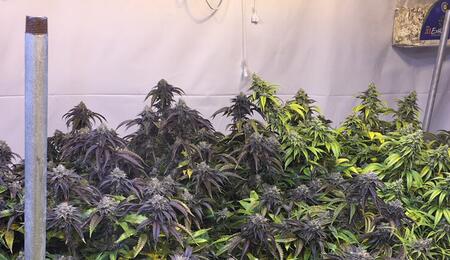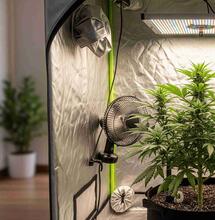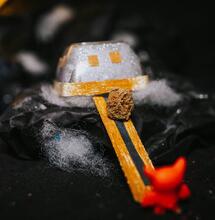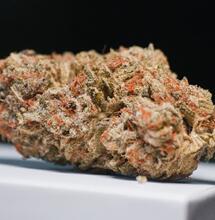CO2 - The Missing Ingredient

Carbon Dioxide has been a hot topic as of late. There are questions about its effectiveness on improving plant health and increasing yields. Let's take a look at some of those questions and try to clarify a few things.
First and foremost, the most important biological function of a plant is that of photosynthesis. Without this chemical process, plants are unable to provide themselves with food. Many gardeners believe that nutrients provide all the food that a plant needs to develop. The truth is nutrients are not consumed as food. Nutrients contain minerals that the plant utilizes in conjunction with light and CO2 during photosynthesis to produce the complex sugars that it needs for energy and growth.The leaves provide plants with all their food because they turn sunlight into food energy. Chlorophyl makes this energy transformation possible. Leaves also make the oxygen in the air that we breathe.
Chlorophyl is a pigment found in the cells of leaves which is formed only in the presence of light and is what makes plants green. Chlorophyl is contained in the chloroplasts and has the ability to capture light energy. Sunlight shines through the top of the leaf and reaches the next layer of cells. The light energy is trapped by the chlorophyl in the chloroplasts. In the chloroplasts, a process that uses water changes the light energy into a kind of chemical energy. This chemical energy is stored in the chloroplasts. The chloroplasts use the chemical energy to make food. Air enters the leaf through the stomata and moves into tiny spaces around the food-making cells in the leaf. Carbon dioxide from the air passes through the cell walls and membranes of the cells. Carbon dioxide enters the chloroplasts where the previously stored chemical energy converts the carbon dioxide into sugar. Tubes in the plant carry sugar from the leaf cells to other parts of the plant, such as roots, stems, and flowers. Cells in these parts of the plant store some of that sugar.
Does CO2 help with clones and rooting?
An often overlooked and under studied aspect of plant response to CO2 is on the below ground processes. When exposed to increased CO2, roots have been observed to become more numerous, longer, thicker, and faster growing in many plant species. When cloning plants, root growth appears 3-5 days sooner with CO2 enrichment versus without. Although some things are known about root responses to CO2 enrichment, much remains to be learned. Nevertheless, it is clear that plant roots, like most other plant organs, typically do better in CO2 enriched air versus ambient air.
What does light have to do with CO2?
Photosynthesis has two parts. The light dependent reactions and the light independent ones. The light dependent part is the use of light to "steal" electrons from water. This is the process that produces oxygen. The light independent part is carbon fixation. Plants produce CO2 during respiration when they break down sugars just as humans do. They do this day and night, but during photosynthesis they tend to take more CO2 out of the air than they put in. They reduce CO2 output during the carbon fixation steps of the light-independent reactions of photosynthesis. Both processes go on all of time, except carbon fixation tends to be more active during the day. They only release Oxygen during the day since they require light to do it.
Does CO2 really improve yields or just make for a healthier plant?
The answer is both. The goal of CO2 enrichment is to reduce the time from seedling to harvest and to speed up growth and increase yields. Plants are also able to better resist insects and disease when grown with enriched CO2. In a study, lettuce was grown in a greenhouse with ambient air versus lettuce grown in a greenhouse with CO2 enrichment. The results were clear. Lettuce grown in the greenhouse with ambient air was ready to harvest in 59 days. In the greenhouse with CO2 enrichment the lettuce was harvested in 48 days. By weight the CO2 enriched greenhouse lettuce weighed 30% more. In studies here at our farm, we have found that by supplying tomato plants with elevated CO2, those plants produced 20% more fruit than those plants that did not receive the elevated CO2. By harvestable weight the plants receiving more CO2 out produced those without by 25%. Tests performed on strawberries showed that strawberries grown with elevated levels of CO2 contained more sugars and physical mass to support a greater number flowering sites. The fact that there were more flowering sites led to a greater number of strawberries being formed and therefore led to more overall production.
Can you have too much CO2?
To much CO2 can be detrimental for plants. When CO2 levels rise too high the plants ability to perform transpiration during photosynthesis is reduced. With lower transpiration rates, less nutrients are drawn thru the plant, thus less food enters the plant and growth slows down. High CO2 levels can cause necrosis spots to appear on leaves that may also roll into themselves. These dead tissue spots are an invitation for bacteria and mold to appear. The bacteria and mold feed on the dead tissue and can cause plant damage, lower yields and in some cases cause crop failure. It has been shown that CO2 levels around 1200-1500 ppm's provide for optimal growth. With levels above this you are only wasting CO2 and potentially asking for trouble.
Conclusion
CO2 is often overlooked as not being a necessary additive for indoor gardening. While plants can survive without it, you are not maximizing your gardens potential. Even slight elevations can be of benefit for your garden. With ambient air, CO2 levels hover around 400 ppm. Raising this level to even 600 ppm will give you rewards. When beginning CO2 enhancement in a garden the first noticeable thing you will see is the fact that your garden is greener. This is proof that your garden is benefiting from the CO2 you are providing. Greener plants mean more Chlorophyl is present in the leaves and shows more that more photosynthesis is taking place. Their are many options available for CO2 enrichment. Do your research and find the option that works best for you. You and your garden will be better off in doing so!!



